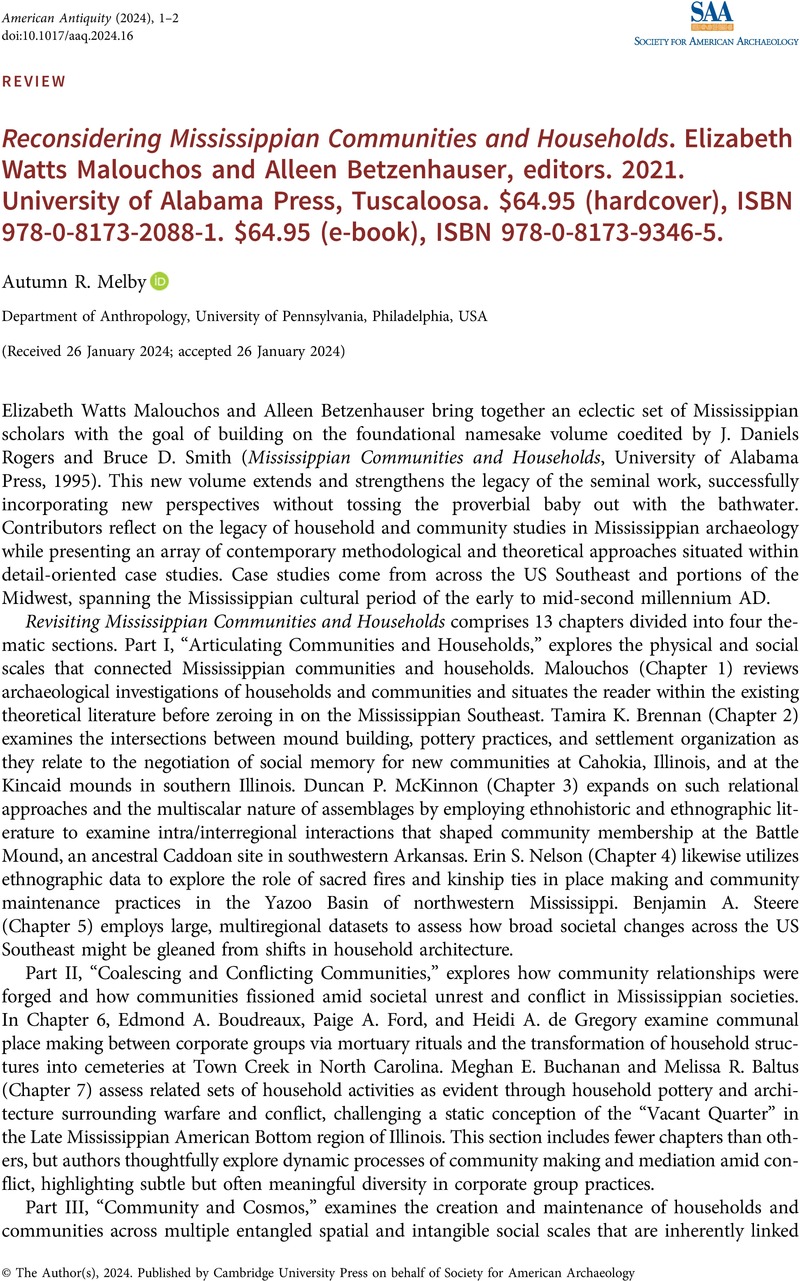No CrossRef data available.
Article contents
Reconsidering Mississippian Communities and Households. Elizabeth Watts Malouchos and Alleen Betzenhauser, editors. 2021. University of Alabama Press, Tuscaloosa. $64.95 (hardcover), ISBN 978-0-8173-2088-1. $64.95 (e-book), ISBN 978-0-8173-9346-5.
Review products
Reconsidering Mississippian Communities and Households. Elizabeth Watts Malouchos and Alleen Betzenhauser, editors. 2021. University of Alabama Press, Tuscaloosa. $64.95 (hardcover), ISBN 978-0-8173-2088-1. $64.95 (e-book), ISBN 978-0-8173-9346-5.
Published online by Cambridge University Press: 05 April 2024
Abstract
An abstract is not available for this content so a preview has been provided. Please use the Get access link above for information on how to access this content.

- Type
- Review
- Information
- Copyright
- Copyright © The Author(s), 2024. Published by Cambridge University Press on behalf of Society for American Archaeology


